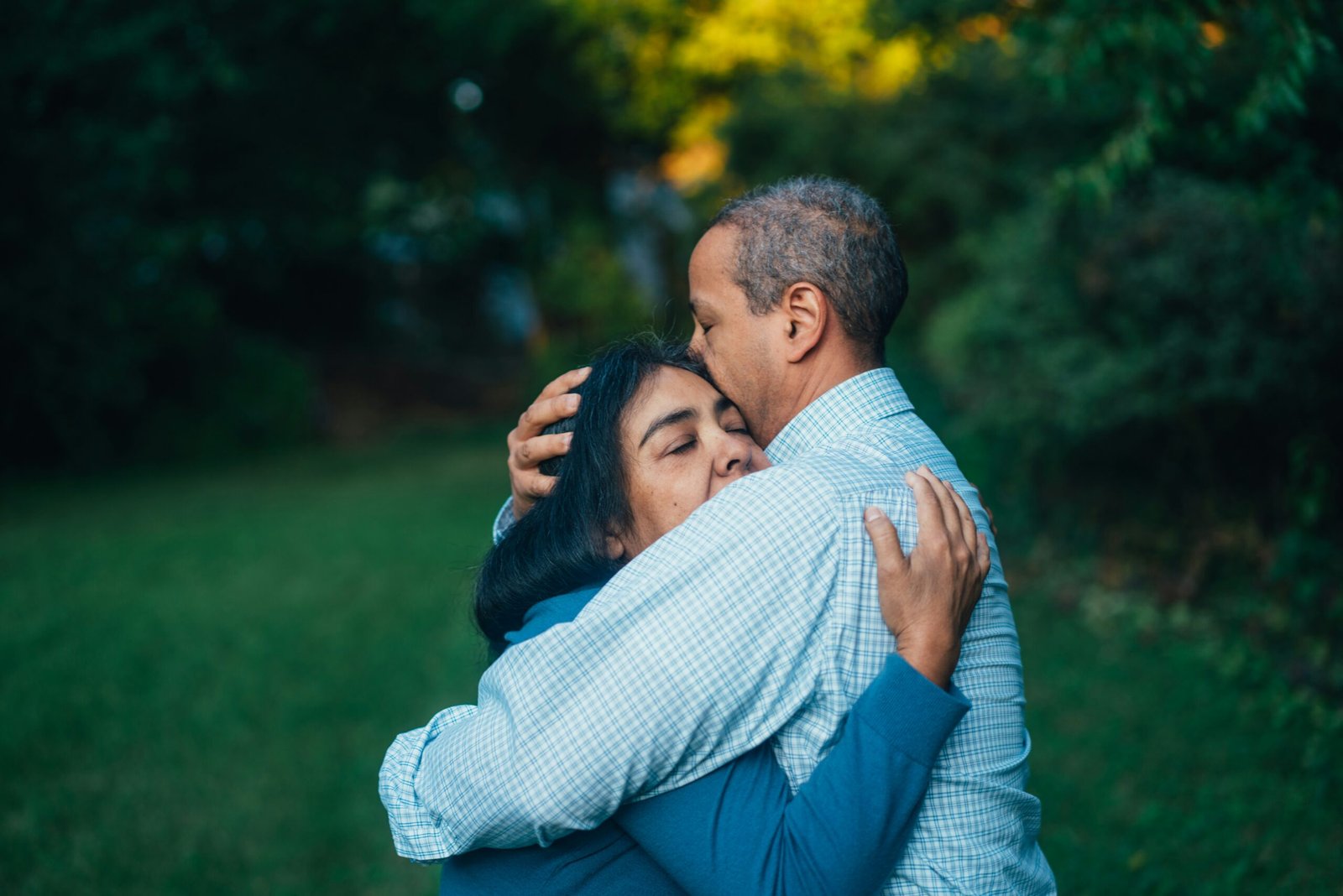Introduction to Li Ming and His Work
Li Ming is a dedicated psychological counselor based in Beijing, specializing in the crucial area of adolescent mental health. With an academic background in psychology from a prominent university, he has spent several years cultivating his expertise in addressing anxiety and emotional difficulties commonly experienced by teenagers. His journey into the realm of counseling was inspired by his own experiences as a youth navigating the complexities of cultural identity, which informs his empathetic approach towards the clients he serves.
An essential aspect of Li Ming’s work involves recognizing the diverse cultural backgrounds of the youths he counsels. He understands that many adolescents grapple not only with personal identity but also with the expectations and pressures placed upon them by their families and society. This multicultural awareness enhances his effectiveness, allowing him to tailor his therapeutic techniques to meet the distinct needs of individual clients. He often incorporates elements of traditional Chinese practices alongside contemporary psychological methods, ensuring a holistic approach that resonates with his clients’ experiences.
Throughout his career, Li Ming has encountered numerous challenges, particularly when addressing anxiety disorders that stem from familial expectations and societal norms. Many of the youths he works with face immense pressure to excel academically and conform to cultural standards, leading them to experience heightened levels of stress and anxiety. Li Ming remains committed to creating a supportive environment, where teenagers can express their concerns and explore their identities without fear of judgment. This dedication to fostering self-acceptance and resilience is evident in the personalized strategies he employs in his counseling sessions.
In this blog post, we will delve deeper into the transformative experiences of his clients and the pivotal role that counseling plays in enabling teenagers to bridge cultures and discover their self-identity.
The Arrival of Maya: A Case Study
Maya, a seventeen-year-old girl from Brazil, arrived in a new country filled with aspirations and a sense of hope. However, the reality of her journey was laced with complexity as she encountered cultural conflicts that significantly impacted her self-identity. Coming from a vibrant Brazilian culture where community and familial bonds are emphasized, Maya found herself grappling with the stark differences in her new environment. This transition posed numerous challenges, leaving her feeling disoriented and isolated.
Upon her arrival, Maya’s initial excitement soon morphed into anxiety. She was eager to explore opportunities for education and self-growth; however, the stark cultural contrasts often left her feeling like an outsider. The values and norms she had grown up with clashed with those predominant in her new surroundings, leading to feelings of confusion about her identity. In Brazil, being surrounded by extended family and friends had instilled in her a strong sense of belonging, but in this new place, she felt unmoored, lacking those essential support systems.
Maya’s aspirations to integrate and thrive in her new environment began to wane as she faced the weight of societal expectations and the fear of not measuring up. Her struggle with self-identity was compounded by the internal conflict stemming from her Brazilian heritage and the pervasive norms of her new culture. This disconnect led her to seek professional help, hoping that a psychological counselor could provide guidance and tools to navigate these turbulent waters. Maya’s case exemplifies the intricate dance between cultural identity and personal aspirations, highlighting the importance of understanding and support in a teenager’s search for self during a time of profound change.
Understanding Cultural Conflicts in Adolescents
Cultural conflicts are increasingly common among adolescents, particularly in cases where teenagers migrate or find themselves immersed in a foreign culture. The process of navigating differing cultural expectations and norms can create a significant emotional toll, leading to challenges in self-identity. For many teenagers, the struggle to fuse their heritage with a new cultural environment can provoke feelings of confusion, anxiety, and alienation.
One common issue faced by adolescents is the disparity between cultural values. In some cultures, collectivism is emphasized, whereby family expectations and communal responsibilities take precedence over individual desires. Conversely, in more individualistic societies, personal aspirations are often celebrated. This contrast can lead to conflict within the teen, who may feel pressured to choose between honoring family traditions and embracing a more Westernized lifestyle. This internal struggle can exacerbate feelings of isolation when the individual feels rejected by both their cultural roots and the broader society.
Moreover, language barriers further complicate the self-identity journey for migrant youths. The inability to communicate effectively in the dominant language can lead to social exclusion, making it difficult for adolescents to form friendships or fully engage in their new environment. This emotional strain often manifests as anxiety, low self-esteem, or depression, adversely affecting their mental health. Anxiety stemming from cultural conflicts can also trigger a reluctance to participate in activities that could aid assimilation, creating a cycle of withdrawal.
Another example includes differing views on gender roles. In some cultures, strict adherence to traditional gender roles may clash with the more egalitarian perspectives of the new environment. Adolescents navigating these discrepancies may encounter challenges in expressing their identity and reconciling their beliefs, potentially leading to feelings of disorientation and emotional distress.
Such cultural conflicts highlight the importance of understanding the unique challenges adolescents face as they seek to forge their self-identities in a multicultural landscape. It is vital for psychological counselors to recognize these nuances, as they play a critical role in supporting teenagers through this complex emotional terrain.
The Role of Communication in Counseling
Open communication is a cornerstone of effective psychological counseling, facilitating a safe environment where clients feel comfortable expressing their thoughts and emotions. For Maya, a teenager navigating the complexities of her cultural identity, the relationship with her counselor, Li Ming, heavily relied on their ability to communicate openly. This dynamic allowed them to explore Maya’s experiences in-depth, fostering a deeper understanding of her feelings and challenges.
One key technique employed by Li Ming was active listening. This involved not just hearing Maya’s words but fully engaging with her narratives, providing feedback that encouraged her to delve even deeper into her feelings. Active listening is essential in counseling as it helps build trust and rapport, making clients feel valued and understood. Maya often found solace in Li Ming’s undivided attention, which enabled her to articulate her cultural struggles without fear of judgment.
Empathy also played a crucial role in their communication. Li Ming consistently sought to understand Maya’s perspective, reflecting her emotions back to her in a way that highlighted their significance. This empathetic approach not only validated Maya’s experiences but also allowed her to feel supported throughout her counseling journey. Such validation is vital in any therapeutic relationship, as it assures clients that their feelings are legitimate, promoting a more profound healing process.
Additionally, Li Ming utilized validation techniques, affirming Maya’s emotions and experiences as she navigated her dual cultural existence. This technique reinforced the idea that it is normal to feel torn between identities, thus reducing feelings of isolation. In this context, communication becomes an essential instrument in bridging the gap between Maya’s diverse cultural experiences and her quest for self-identity, ultimately enhancing the outcome of the counseling relationship.
The Process of Self-Discovery
The journey to self-discovery is often accompanied by various stages that enable individuals to better understand their identity and purpose. In Maya’s case, her relationship with her psychological counselor, Li Ming, serves as a catalyst for meaningful change. The process commences with an initial assessment, where Li Ming encourages Maya to articulate her feelings, experiences, and the cultural conflicts she faces as a teenager navigating two distinct backgrounds. This foundational step is critical, as it lays the groundwork for future explorations into her values and aspirations.
As the sessions progress, Li Ming employs techniques such as guided journaling and reflective questioning. These methods prompt Maya to critically examine her beliefs and the origins of her values. Through journaling, she is able to chronicle her thoughts, which fosters a deeper understanding of how her upbringing and cultural experiences shape her identity. Additionally, reflective questioning encourages her to confront any contradictory notions she may hold about herself and her goals.
Another essential aspect of this self-discovery process involves setting personalized goals. Li Ming assists Maya in identifying both short-term and long-term objectives, which encourages her to envision the future she desires. By aligning these goals with her core values, she can create a more coherent sense of self. This alignment is crucial for personal growth, as it instills motivation and clarity in her journey.
Throughout the counseling sessions, Maya also learns the importance of resilience and adaptability. Li Ming emphasizes that self-discovery is not a linear journey; rather, it is characterized by ups and downs that ultimately contribute to a richer understanding of oneself. This perspective instills in Maya the confidence to embrace her unique identity, integrating her cultural backgrounds into a harmonious whole.
Emotional Resonance: A Key to Connection
Emotional resonance plays a pivotal role in the therapeutic process, particularly in the context of a teenager navigating the tumultuous journey of self-identity. For Li Ming, the ability to connect with her psychological counselor, Maya, on an emotional level became a cornerstone of her recovery. This deep emotional connection facilitated a safe space where Li Ming could express her feelings, fears, and aspirations without fear of judgment.
The significance of emotional resonance extends beyond mere sympathy; it embodies a shared understanding and validation that are crucial for personal growth. Li Ming felt recognized and appreciated in her individuality, which reinforced her sense of belonging. This emotional support was not just about resolving immediate concerns; it provided a foundation for long-term psychological resilience. By aligning with Li Ming’s emotions, Maya helped her to make sense of her experiences, fostering a supportive environment that encouraged reflection and healing.
Moreover, emotional resonance can enhance communication during counseling sessions. When Li Ming observed Maya’s empathetic responses, it encouraged her to be more open about her own experiences. This reciprocity created a dynamic where vulnerability could thrive, allowing Li Ming to confront difficult emotions and thoughts. As she recognized her struggles reflected in Maya’s understanding responses, Li Ming’s self-esteem began to improve, facilitating a journey toward a stronger self-identity.
In this therapeutic relationship, emotional resonance acts as a bridge, connecting the individual’s internal world to external support. It enables teenagers like Li Ming to develop a clearer insight into their identities, transforming feelings of isolation into connections that foster growth. By leveraging emotional resonance, counseling becomes a powerful tool in navigating the complexities of adolescence, ultimately guiding individuals toward acceptance and belonging.
The Importance of Psychological Support in Cross-Cultural Contexts
In today’s globalized society, many teenagers encounter the complexities of navigating multiple cultures, which can often lead to feelings of confusion and anxiety. The presence of psychological support plays a critical role in helping these individuals develop their self-identity amidst cross-cultural challenges. Specifically, mental health professionals, such as counselors, can offer invaluable assistance by providing a safe and confidential environment for exploration and expression.
Counseling serves as a foundational mechanism for psychological support, enabling teenagers to articulate their experiences and emotions related to their cultural backgrounds. Through individual or group sessions, these young individuals can gain insights into their unique identities, bolstering their confidence in navigating cultural intersections. Counselors are trained to understand the nuances of culture and how it affects mental health, allowing them to tailor their approaches to meet the diverse needs of each client. This personalized support encourages teenagers to embrace their bicultural or multicultural identities rather than viewing them as a source of conflict.
In addition to professional counseling, peer support plays a vital role in enriching the psychological well-being of adolescents facing cross-cultural challenges. By engaging with others who share similar experiences, teenagers can develop a sense of belonging and acceptance. Support groups, community organizations, and school-based initiatives often provide platforms for youths to connect, share their stories, and support one another. These interactions foster a healthy discourse on cultural identity, allowing teens to learn from one another’s experiences and coping strategies.
Community resources further enhance this framework of psychological support by promoting awareness and access to mental health services among culturally diverse populations. Workshops and outreach programs can help demystify mental health and encourage families and youths to seek assistance when necessary. The combination of professional counseling, peer connections, and community involvement creates a robust support system essential for teenagers navigating their paths to self-identity in an increasingly interconnected world. Ultimately, these resources empower adolescents to forge their identities confidently and resiliently, affirming their place within both their local and global communities.
Tools and Techniques for Overcoming Anxiety
Maya’s journey through adolescence is fraught with various challenges, one of which is anxiety. To address this issue, Li Ming introduces her to several effective tools and techniques that are instrumental in managing feelings of anxiety. These strategies not only empower her to cope but also encourage a deeper understanding of her emotional landscape.
One powerful technique is mindfulness, which encourages individuals to focus on the present moment and acknowledge their thoughts and feelings without judgment. This practice can help Maya cultivate a sense of calm amidst overwhelming situations. For instance, she might engage in simple mindfulness exercises such as breathing techniques or guided imagery, allowing her to reduce stress levels and gain clarity when faced with anxiety-inducing scenarios.
Another effective approach is cognitive behavioral therapy (CBT), which teaches individuals how to identify and challenge irrational thoughts and beliefs that contribute to anxiety. Li Ming teaches Maya how to reframe negative thinking patterns through structured exercises. By recognizing triggers and developing practical responses, she can gradually shift her perception of stressful situations, thereby diminishing their emotional impact over time.
Setting achievable goals is also a critical aspect of managing anxiety. Li Ming guides Maya in establishing short-term objectives that can pave the way for long-term achievements. These goals should be specific, measurable, attainable, relevant, and time-bound (SMART), allowing Maya to experience small successes that build her confidence. This structured approach not only combats feelings of overwhelm but also fosters a sense of agency in navigating her challenges.
Through the combined use of mindfulness, cognitive behavioral techniques, and goal-setting exercises, Maya gradually acquires a toolkit that equips her to confront her anxiety more effectively. As she continues to practice these strategies, she develops resilience, which is essential for her growth and self-identity.
Conclusion: A New Beginning for Maya
Maya’s transformative journey throughout her counseling sessions with Li Ming illustrates the profound impact of psychological support in navigating the complexities of cultural identity. Initially caught in the struggle of assimilating her dual cultural backgrounds, Maya experienced feelings of confusion and isolation. However, through Li Ming’s expertise and empathetic approach, she began to unravel the layers of her identity, discovering the strength that lies in her multicultural heritage.
Li Ming’s role as a psychological counselor was pivotal in facilitating Maya’s exploration of self-acceptance. The tailored strategies and reflective conversations they engaged in proved instrumental in helping Maya articulate her emotions and reshape her perception of cultural duality. This collaboration fostered a safe space where Maya could confront her internal conflicts and embrace her unique identity rather than viewing it as a burden. Empowered by this newfound understanding, Maya learned to honor both her cultural influences, ultimately choosing to blend them into a cohesive and authentic self.
The lasting impact of their counseling relationship extended beyond the confines of their sessions. As Maya continues to navigate her multicultural environment, the tools and insights gained from her experiences with Li Ming serve as a foundation for her ongoing growth. This journey has instilled in her a deep appreciation for cultural understanding and the importance of self-acceptance. Maya’s newfound confidence not only enhances her interactions within her community but also inspires those around her to reflect on their own identity challenges.
As such, Maya’s story is a testament to the power of psychological counseling in bridging cultural divides and fostering personal transformation. Her journey illustrates the ongoing nature of identity development and underscores the significance of support in navigating the complexities of multicultural life. It is through this continuous journey that Maya embarks on a new beginning, empowered and enriched by her unique cultural narrative.



















No Comments
Leave a comment Cancel